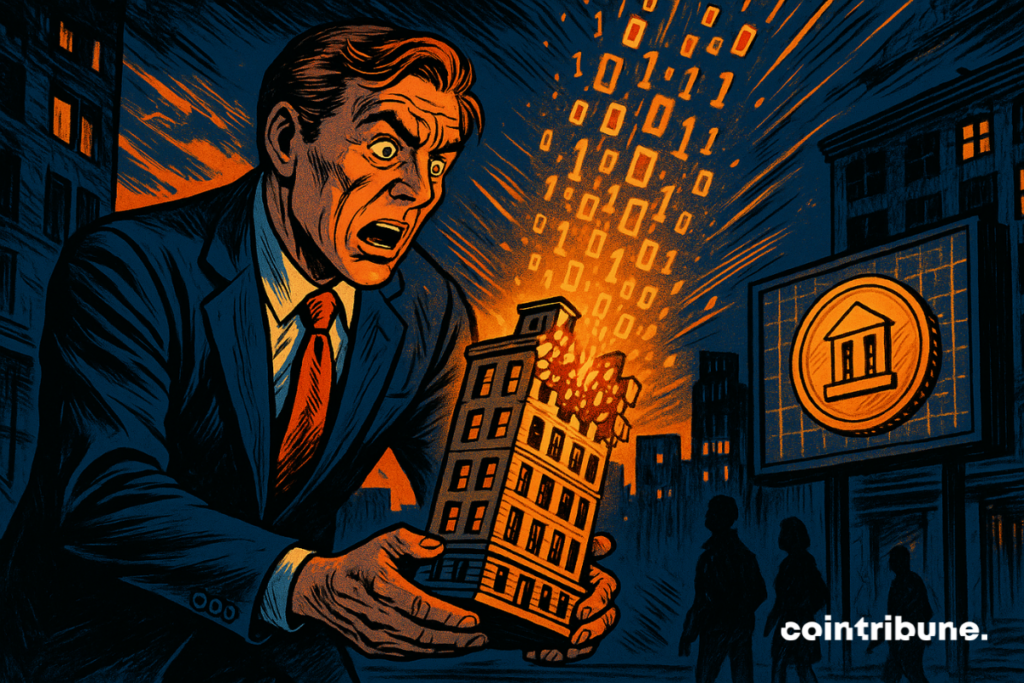Tokenized Real Estate: Brick and Mortar Enter the Internet of Value
There has been a lot of talk about RWAs in the last two years. Among them, real estate ticks all the boxes for a “mainstream” asset: predictable cash flows (rents), a tangible underlying asset, and the possibility to buy fractions rather than a whole property. The promise is simple: turning shares of properties into tokens tradable 24/7, usable as collateral in DeFi, and settling rental income in stablecoins. The challenge remains to identify the projects that really deliver and those that are just storytelling.

In brief
- Tokenization makes real estate accessible, fractional, and liquid.
- Several models emerge: DeFi, compliance, securities, or tokenized rents.
- Before investing, one must understand legal framework, governance, and liquidity.
What tokenization changes in practice
Gone are the six-figure entry tickets and endless paperwork: you can take a few hundred euros of exposure, receive your on-chain rents, resell on a secondary market, and, if needed, borrow temporarily against your shares instead of selling everything.
The backbone: a legal vehicle holding the asset (SPV, trust, etc.), a compliant issuance (KYC/AML), a smart contract that records rights and flows… and a marketplace where these rights are traded.
Five approaches that are settling in
Propy does not try to “sell rents”; the company tackles the transaction process and the property registry. The idea: to put the deed and the title into an on-chain flow (title NFT, pilot recordings), to reduce delays, costs, and frauds. It’s less “immediate yield”, more securities infrastructure, and ultimately a prerequisite for tokenization to be enforceable everywhere.
Tangible (Polygon) presents itself as an RWA marketplace featuring tokenized real estate (alongside other physical assets). The proposition: a short link between the real asset and the NFT representing its economic ownership, a secondary market, and progressive DeFi integrations. Past experiments around “real-backed” stablecoins nevertheless remind us that design risk remains central.
CitaDAO (Ethereum) embraces the thesis “real estate x DeFi”: assets (or portfolios) secured by DeFi primitives, oracles for valuation, and use cases where one pledges their real estate token to finance other needs. It is the most “composable” version of real estate with, in parallel, a strong requirement for the quality of oracles and governance.
Realio pushes a compliance-first approach for private tokenized offerings (real estate, sometimes associated equity), with an infrastructure designed for regulated issuers and qualified investors. Less “mainstream” in the short term, but aligned with institutional expectations who view real estate on-chain through a legal lens before yield.
RealT remains one of the most recognizable brands for “single-asset” rentals, notably for its education (cash flows rents → wallet) and DeFi integration through dedicated lending markets. A useful presence for comparing models, without dominating the landscape.
Three life scenarios that speak to everyone
- The long-term saver buys property shares in two or three cities, lets the rents fall in stablecoins, and sells when a personal project requires it.
- The freelancer or SME places their excess treasury in a tokenized portfolio, and borrows occasionally against those shares to cover a cash flow gap without disposing of the asset.
- The DeFi curious deposits their real estate tokens as collateral, prudently borrows a stablecoin, then repays as soon as income arrives, keeping a comfortable Health Factor.
What to check before buying
- Legal framework & KYC: who holds the title? which jurisdiction? what sales restrictions?
- Governance & fees: who decides on repairs, sales? what fees (entry, management, exit)?
- Valuation & oracles: estimation method, frequency of appraisals, transparency of assumptions (vacancy, cap rate, repairs).
- Real liquidity: existence of a secondary market (volume, order books), possible redemption delays.
- DeFi integration: prudent LTV, liquidation thresholds, HF to keep >1.2–1.5; avoid borrowing loops if you are not processed to handle them.
Blind spots not to forget
Tokenization does not erase real estate law nor taxation.
Operational risks (vacancy, unpaid rents, repairs) remain. Smart contracts and oracles add a tech layer to audit. Finally, liquidity: a secondary market often exists, but its depth varies; it is better to test a small resale before allocating more.
Tokenization, the future of real estate?
Tokenized real estate is coming out of the lab: some players bet on transaction simplicity, others on securities infrastructure (Propy), DeFi composability (CitaDAO), or institutional compliance (Realio).
Overall, it sketches a landscape where one can access, diversify, and finance differently. In this panorama, RealT retains a landmark role, useful to measure the gap between promise and execution, but the momentum clearly comes from diversity of approaches. For savers as well as builders, the rule remains the same: start small, read the documentation, monitor your ratios, and let the proof of use speak rather than storytelling.
Maximize your Cointribune experience with our "Read to Earn" program! For every article you read, earn points and access exclusive rewards. Sign up now and start earning benefits.
The Cointribune editorial team unites its voices to address topics related to cryptocurrencies, investment, the metaverse, and NFTs, while striving to answer your questions as best as possible.
The contents and products mentioned on this page are in no way approved by Cointribune and should not be interpreted as falling under its responsibility.
Cointribune strives to communicate all useful information to readers, but cannot guarantee its accuracy and completeness. We invite readers to do their research before taking any action related to the company and to take full responsibility for their decisions. This article should not be considered as investment advice, an offer, or an invitation to purchase any products or services.
Investment in digital financial assets carries risks.
Read more